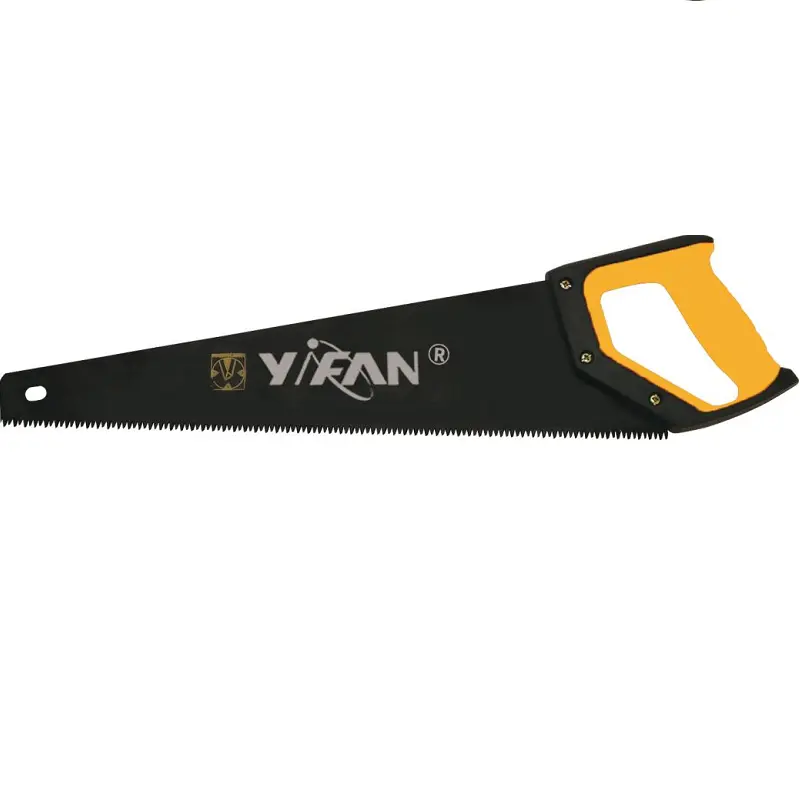The hand saw is a classic hand tool that remains indispensable in various fields, known for its practicality and versatility.
Structure and Materials
A typical hand saw consists of two main components: the saw blade and the handle.
Saw Blade
• Material: Generally made of high-quality steel, the saw blade features a specific thickness and toughness, ensuring durability.
• Teeth Design: The blade is covered with sharp teeth, designed in terms of shape, size, and arrangement to meet diverse cutting needs.
Handle
• Construction: Most handles are made from finely processed wood, providing a comfortable grip. Some handles are designed with anti-slip features to enhance safety during use.

Key Features
Portability
The hand saw is compact and lightweight, making it easy to carry for both field operations and home repairs.
Flexibility in Use
As a manual tool, users can adjust the cutting angle and strength according to the situation, allowing it to handle various complex cutting scenarios.
Versatility
The hand saw is capable of cutting a wide range of materials, including wood, plastic, and rubber. It finds applications in woodworking, construction, gardening, and more.
Innovations and Efficiency
The hand saw has seen continuous improvements in design and efficiency.
Advanced Cutting Design
For instance, hand saws with a three-sided grinding design can cut quickly and accurately. Compared to traditional two-sided non-hardened grinding saw blades, these saws are more labor-saving and significantly enhance cutting speed.
Stability During Use
During the sawing process, the blade maintains high stability, minimizing deviations from the original track, even when encountering wood scars. This ensures a smooth sawing experience.
Customization for Specific Needs
The saw blade can be tailored with different tooth densities based on specific requirements.
• Higher Tooth Density: Provides finer cutting but may require more effort and time.
• Applications: Ideal for tasks demanding high cutting accuracy, such as furniture making and fine woodworking.
Durability and Maintenance
High-Quality Materials
The saw blade is usually made from high-quality steel that undergoes special heat treatment, resulting in high hardness and toughness. This allows it to withstand significant sawing pressure without wearing or deforming.
Handle Material
The durability of the hand saw is also influenced by the handle material. For example, impact-resistant aluminum alloy handles offer high wear resistance for long-term use.
Enhanced User Experience
High-quality hand saws often feature effective chip removal designs, such as chip removal grooves.
• Benefits: These designs enhance the ability to discharge wood chips, preventing blockages that could affect sawing efficiency. They also reduce operating noise, improving the overall user experience and optimizing cutting performance, especially when cutting softwood and wet wood.
By understanding the structure, features, and advancements of the hand saw, users can better appreciate its value and effectiveness in various cutting tasks.
Post time: 09-12-2024




